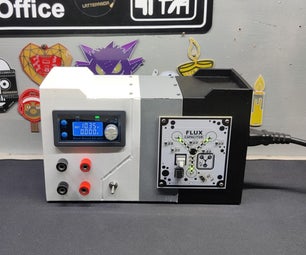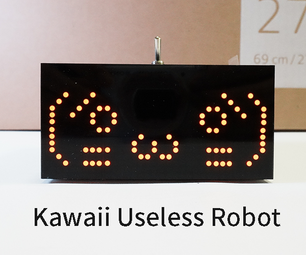Introduction: TailLike
Meet TailLike!!
TailLike is an indicator that allows you to give a wave to cars behind you even at night. I find that during the long winters it's more difficult to give feedback to other drivers. Here's how to wave in any conditions!
---know that I've looked forward to making this instructable since I made a first model in 2015. There are a few photos mixed in from my current version and earlier prototypes. If you enjoy driving and find value I hope you'll try your hand at one!
Step 1: Materials & Tools
Materials
- Coffee Can - ideally with a reflective inside finish and a transparent lid.
- Wire (8-10') - low voltage wire rated for at least 12v. Ideally with two colors to track positive and negative.
- 12v Outlet - buy new or cut up any old electronic. Ideally with a fuse and indicator light
- Xmas Lights - any used incandescent or led works fine. --great if you can use the fused end
- Switch - 2-pole rocker switch
- Old Container - for switch housing (see steps 4+5)
- Optional Film - any hobby store has translucent paper or tape. technically this is required to be street legal. you can't have any rear facing white lights. ---could also use red or blue xmas lights
Tools
- Wire Cutter/Stripper - Drill/Driver - Needle Nose Pliers - Sharpie - Punch (or nail)
- Olfa L1 - here's my first blog post on what the value of the olfa knife for architecture students!
- Soldering Iron (mine is from harbor freight... think it was $3) - Solder
----most of the materials are items i've salvaged over the years. I post a few links below but expect that most people who tinker with electronics already have these components. You can also easily get them from taking apart a few items from dollartree or goodwill.
Step 2: Wiring Diagram
The diagram shown in the photo is pretty simple.
- Install the switch on the positive wire
Step 3: 12v Outlet
Prepare the 12v outlet by stripping the ends of the wires. I am using a salvaged adapter.
Yes. There is really only one detail to take away here. Important to track the positive and negative. I found it useful to have a 12v outlet that had the following features.
- fused
- indicator light (red led on the side)
- red and black wires to recognize +/-
Step 4: Switch Housing (1 of 2)
Prepare the Switch Housing.
Anything work! I'm using an old pill container. It served me well as a container for tomato seeds.
- Use a drill to open a hole in the cap to feed wire
---an easy follow up is to wrap any container in electrical tape
Step 5: Switch Housing (2 of 2)
Cut an opening for the switch. I had a rectangular rocker switch handy and paired it with a rectangular bottle. Pick the right one and take a few passes at opening the hole. Plastic cuts easy.
----the Olfa L-2 is possibly my favorite tool. It was most handy during architecture school and this one I've had for 10+ years
Step 6: Switch Connection
Here I'm using another salvaged component -- a coiled piece of cable. Not necessary but useful if you have one around.
Note that this is the first step where I am soldering. soldering is very simple and a great way to connect wires. I decided to solder because I am connecting small gauge wire to some larger pieces. typically my preference is to simply use electrical tape to wrap wires ---avoid caps whenever possible.
Solder only in a well ventilated space and take care to manage the heat and electricity.
Step 7: Soldering
Here is a look at my soldered connections. Any tips for connecting two different sized wires are certainly welcome. This is my approach and it works fine.
Step 8: Connected Wires
A look at the connected wires as compared to the wiring diagram. Note that the switch comes off it's only coiled wire connection.
--from here I wrapped the wires in electrical tape
Step 9: Christmas Lights
The Christmas Lights need to be connected in the direction of positive to negative electrical flow. Fortunately there are two indicators.
- The fuse of modern xmas lights is on the positive side
- The hinged clasp on each light points back in the positive direction
---these should be standard. Please check your own set. Know that if the lights are setup in reverse it is not dangerous. it simply wont turn on. Under 12v power it won't fry your bulbs.
Step 10: Can Prep (1 of 2)
Prepare the can for wires and lights.
- Punch an opening - I'm using a nail as a punch to open a hole at the base of the can
- Clean the opening - the needle nose works well to expand the hole and round down the edges
Wire connections happen inside the can. You could also open a larger hole and cover it with duct tape if you want to pass lights through that are already connected.
Step 11: Can Prep (2 of 2)
Adding a Thumb
- My approach is to simply google the facebook thumb. ---note the cover image has a thumb that is outlined. That is from an earlier model. I actually like the outlined model better but it's more difficult to see
- Trace an outline
- Fill it in
Step 12: Road Test + Enjoy!
Hope you've enjoyed this one!!
For years I've wanted to put together a kickstarter for the project. I love driving and always want to give feedback to other drivers on the road ---wonderful to be able to say thank you when someone lets you merge over.
Positive Feedback (only) - I've never turned the thumb upside down or drawn anything negative. Certainly suggest avoiding such behavior. You never know when your action is going to be the straw that sets someone else off.
Visibility. The thumb is clearly visible from 20-30 feet. Clearly visible when stopped or when flashed while passing.
Your Feedback - Any comments are certainly welcome.
Thank you! Jeff
Here are a few other recent projects:
- Dry a Cell Phone - spinning a cell at 40mph to dry a wet phone
- Ctric Acid gets a Shaker - why we keep CA handy in the kitchen
- Babka Basics & Breadmaking - yes, I think anyone can bake bread without a recipe

Participated in the
Make it Glow Contest 2018











